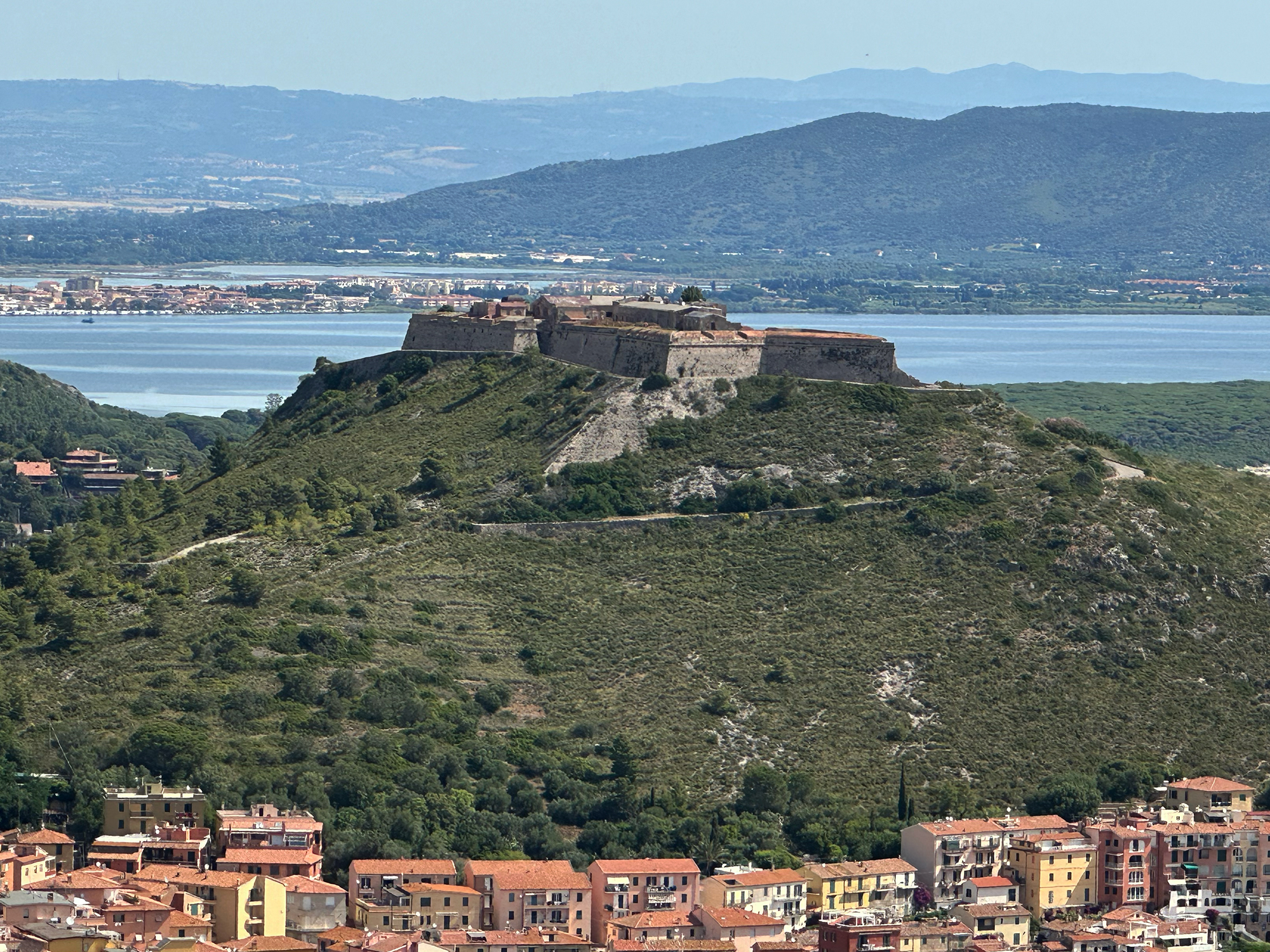
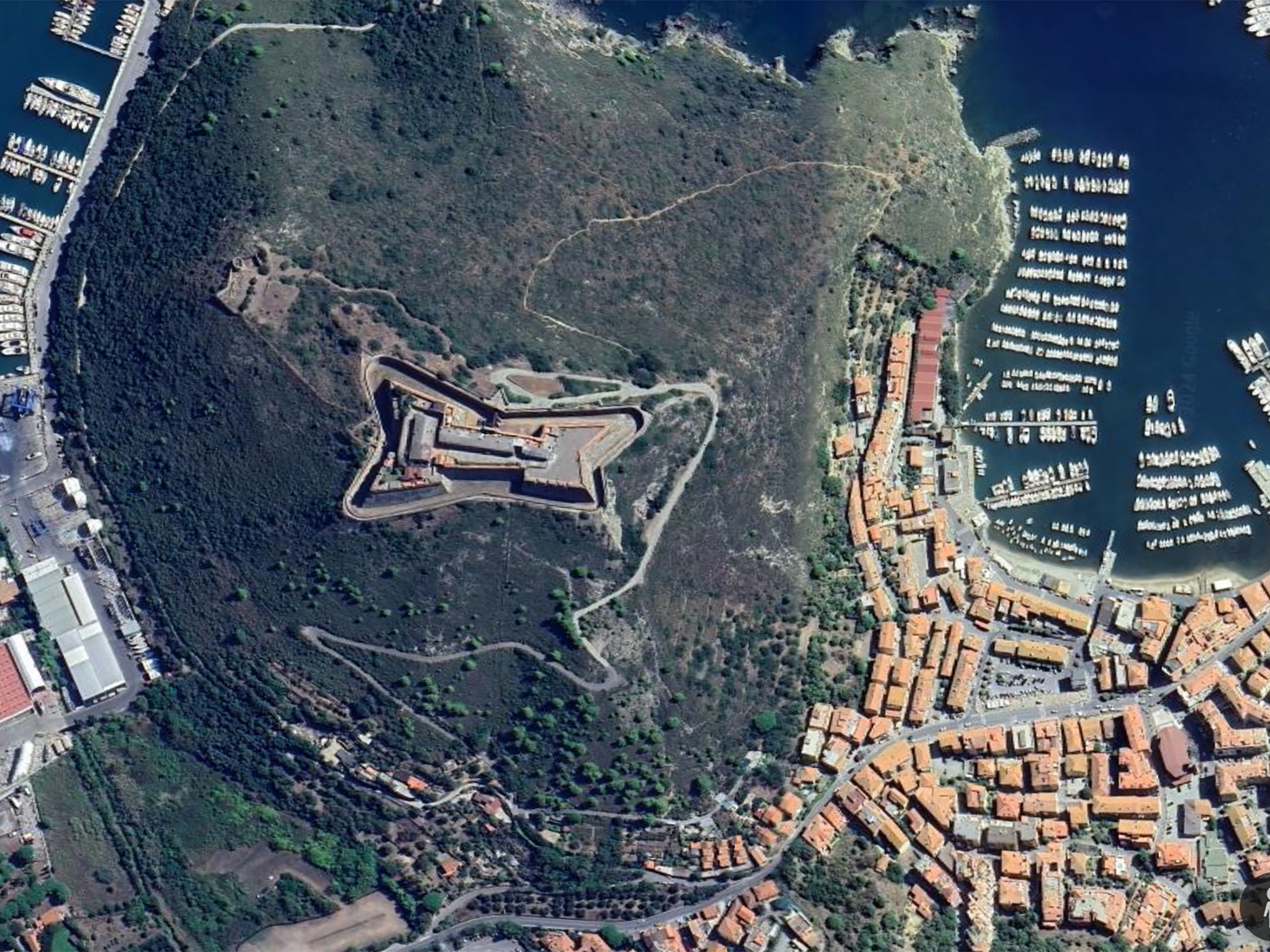
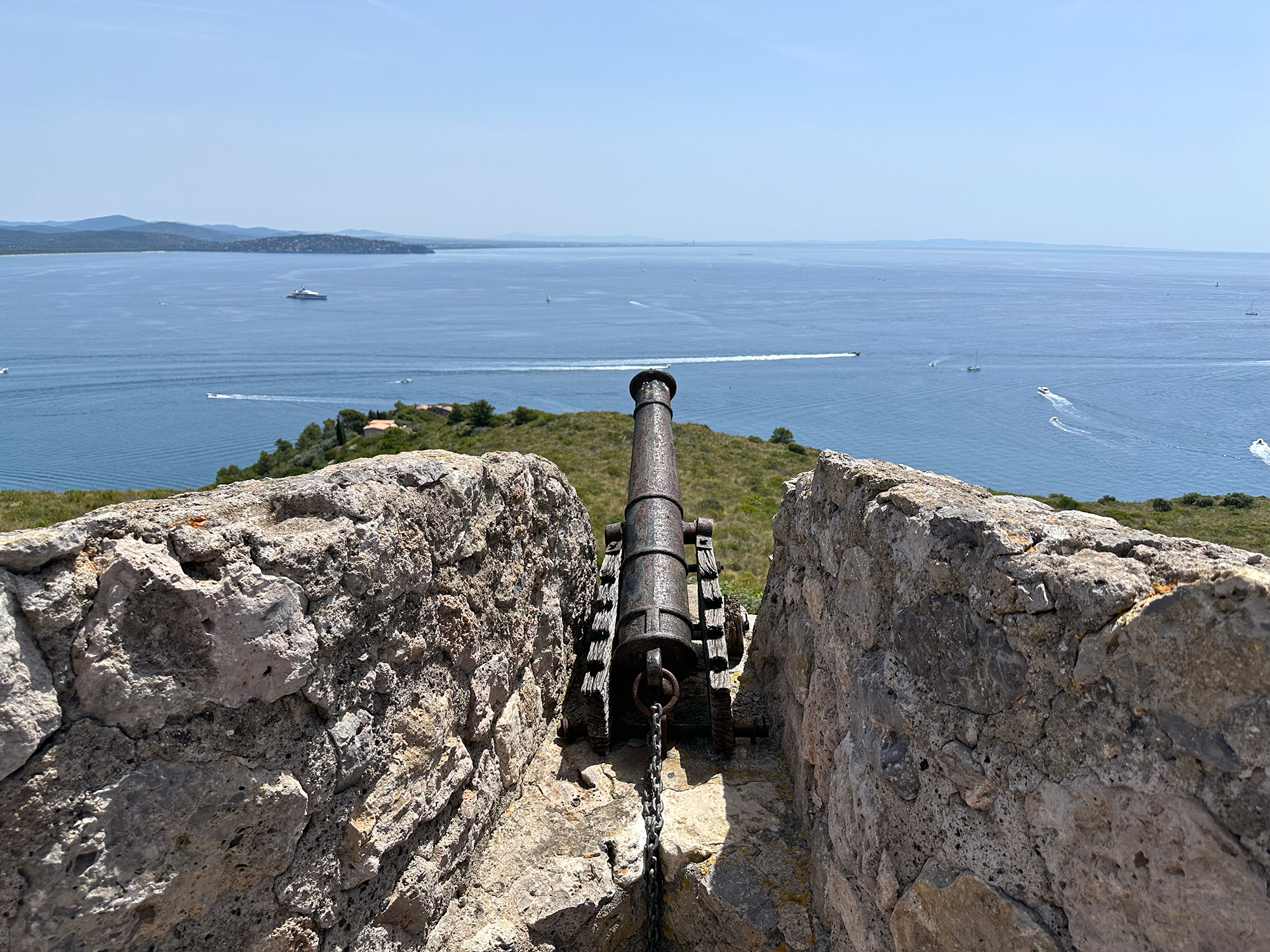
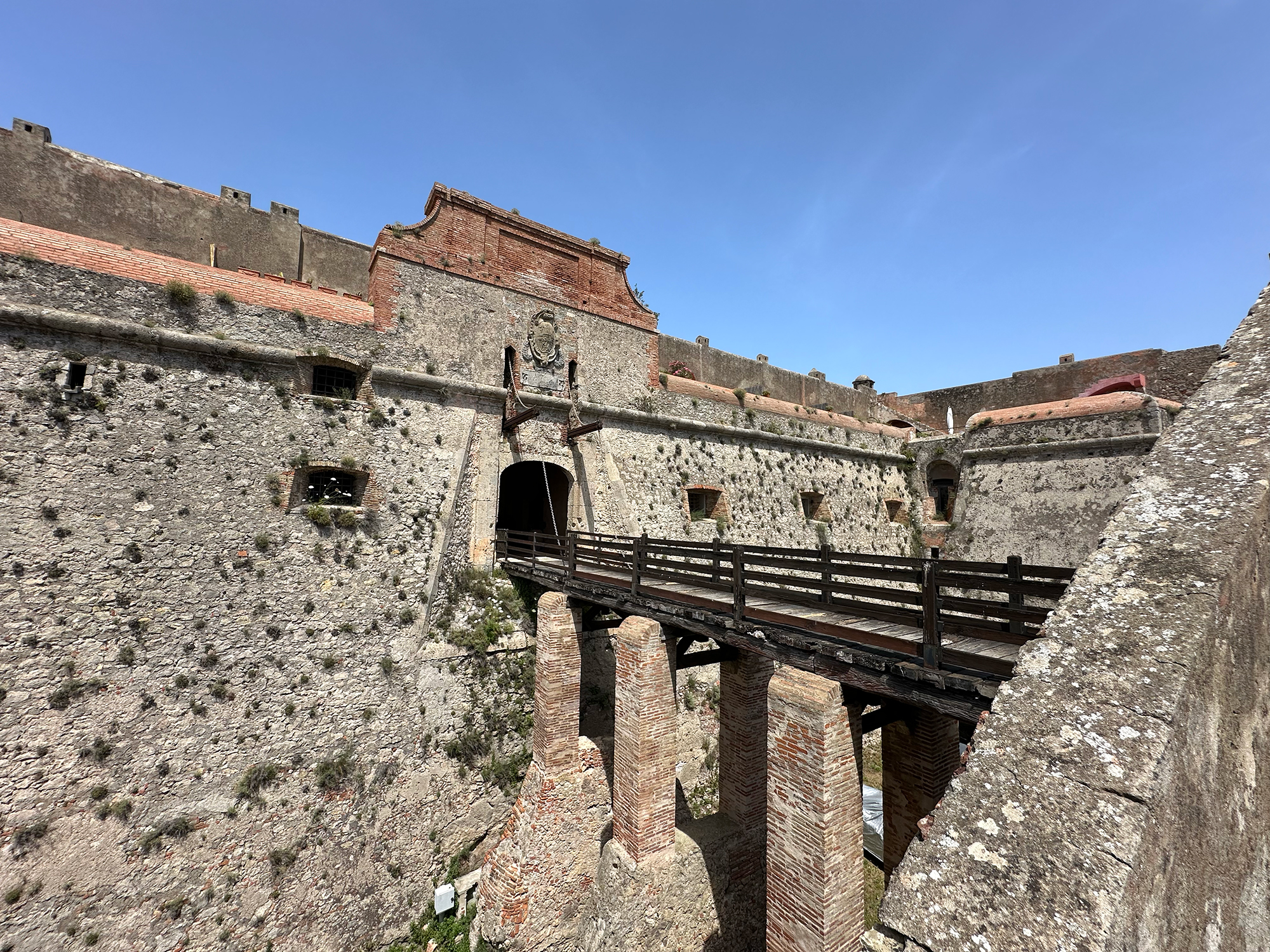
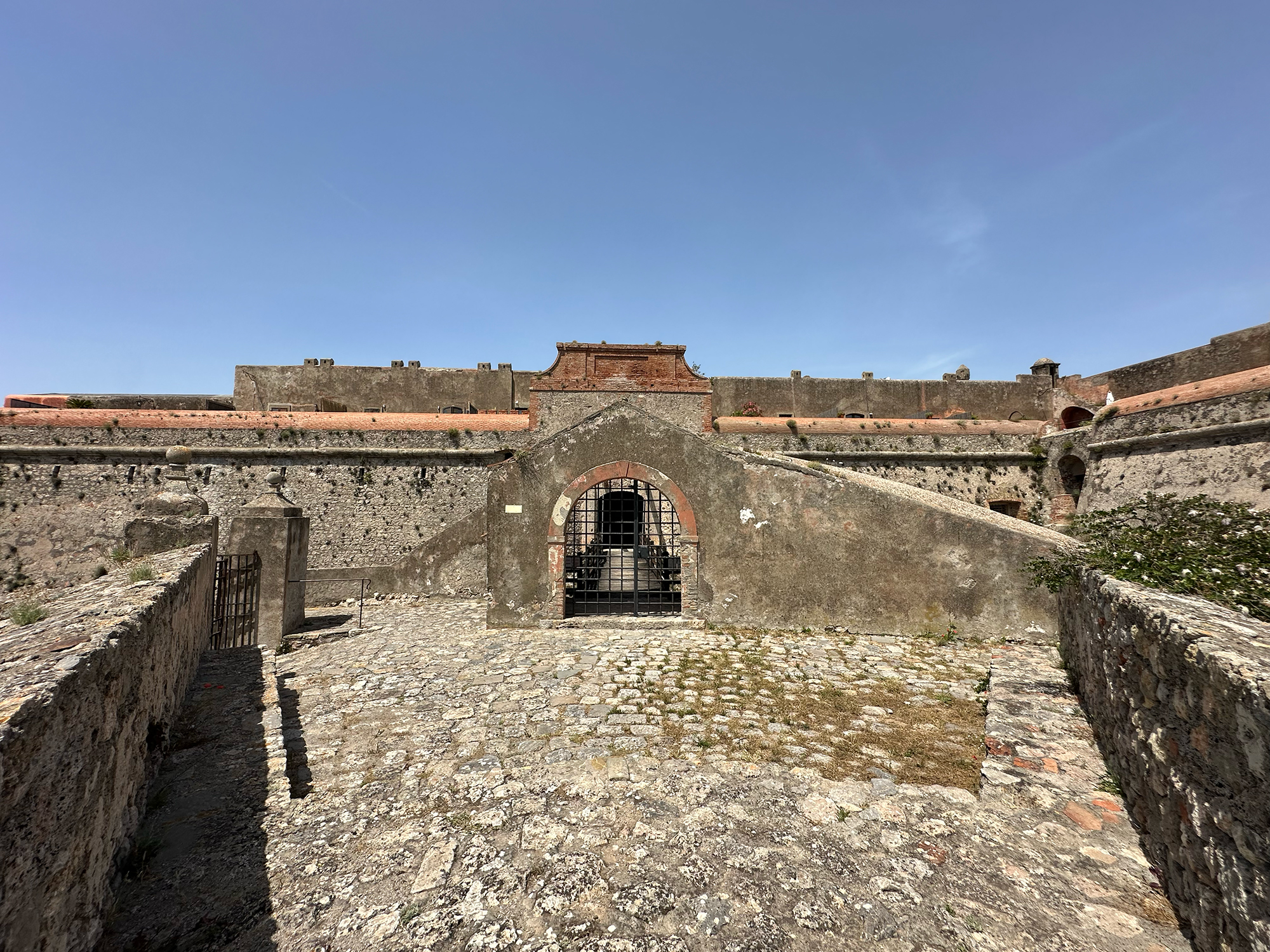
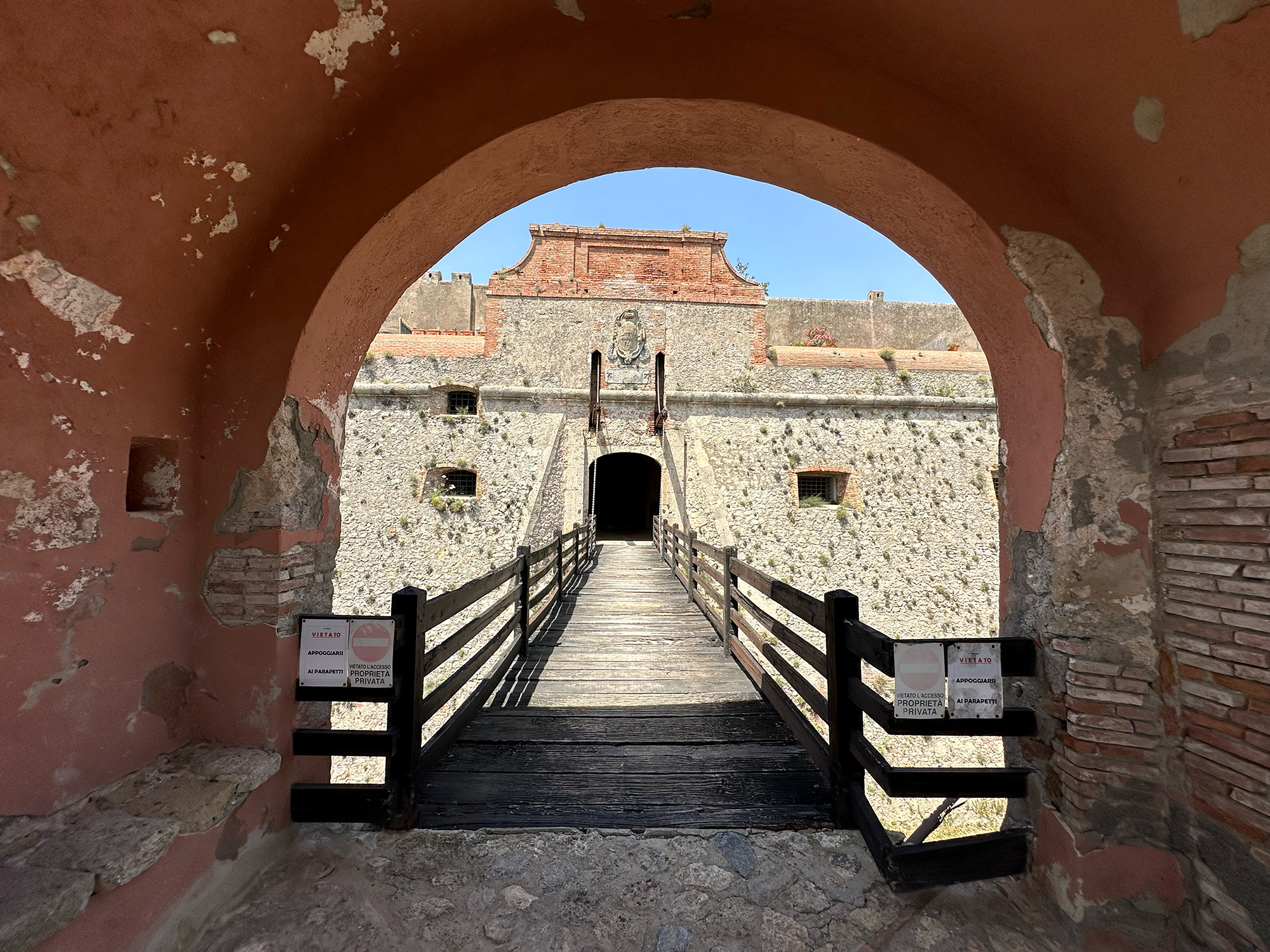
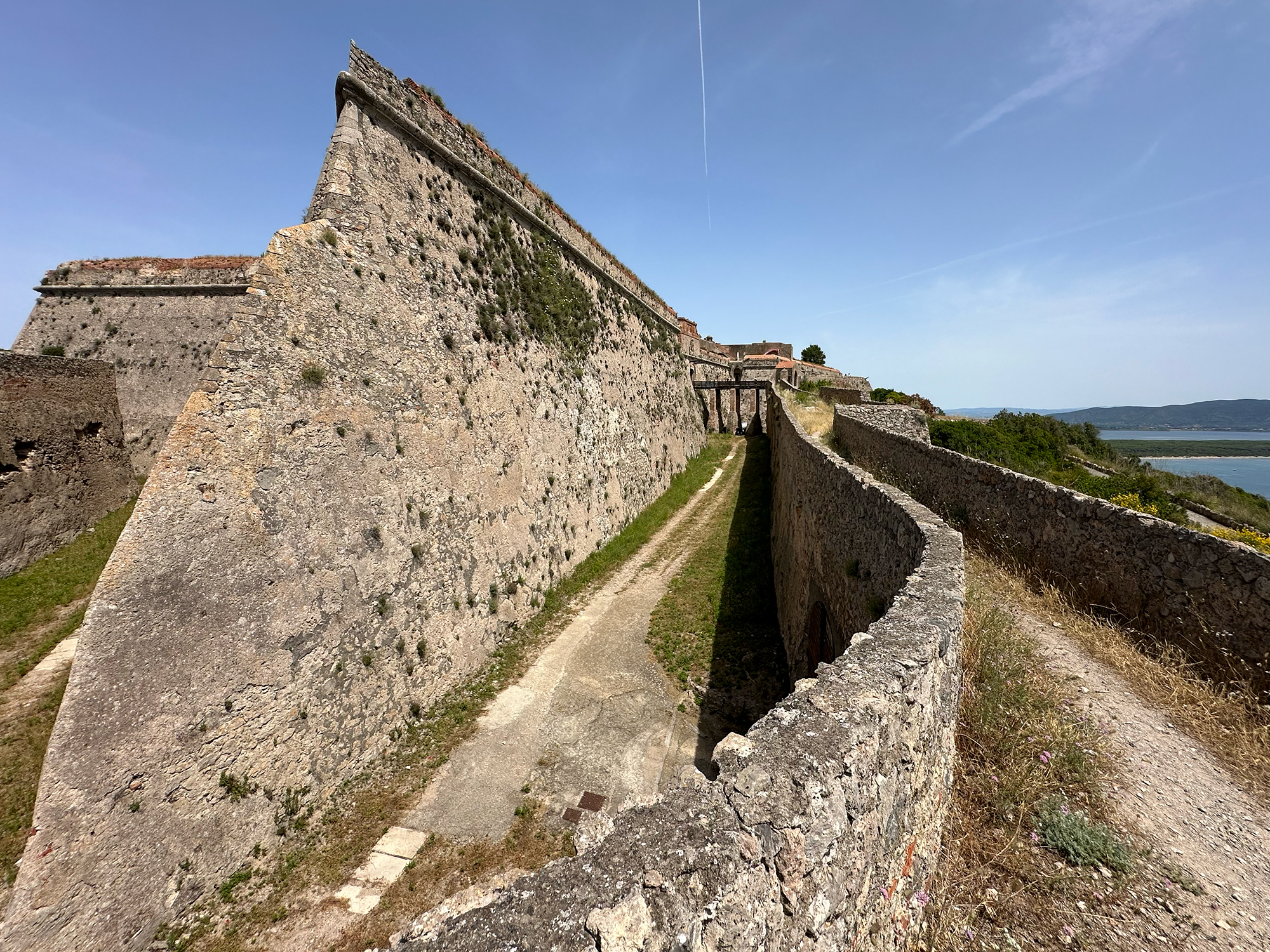
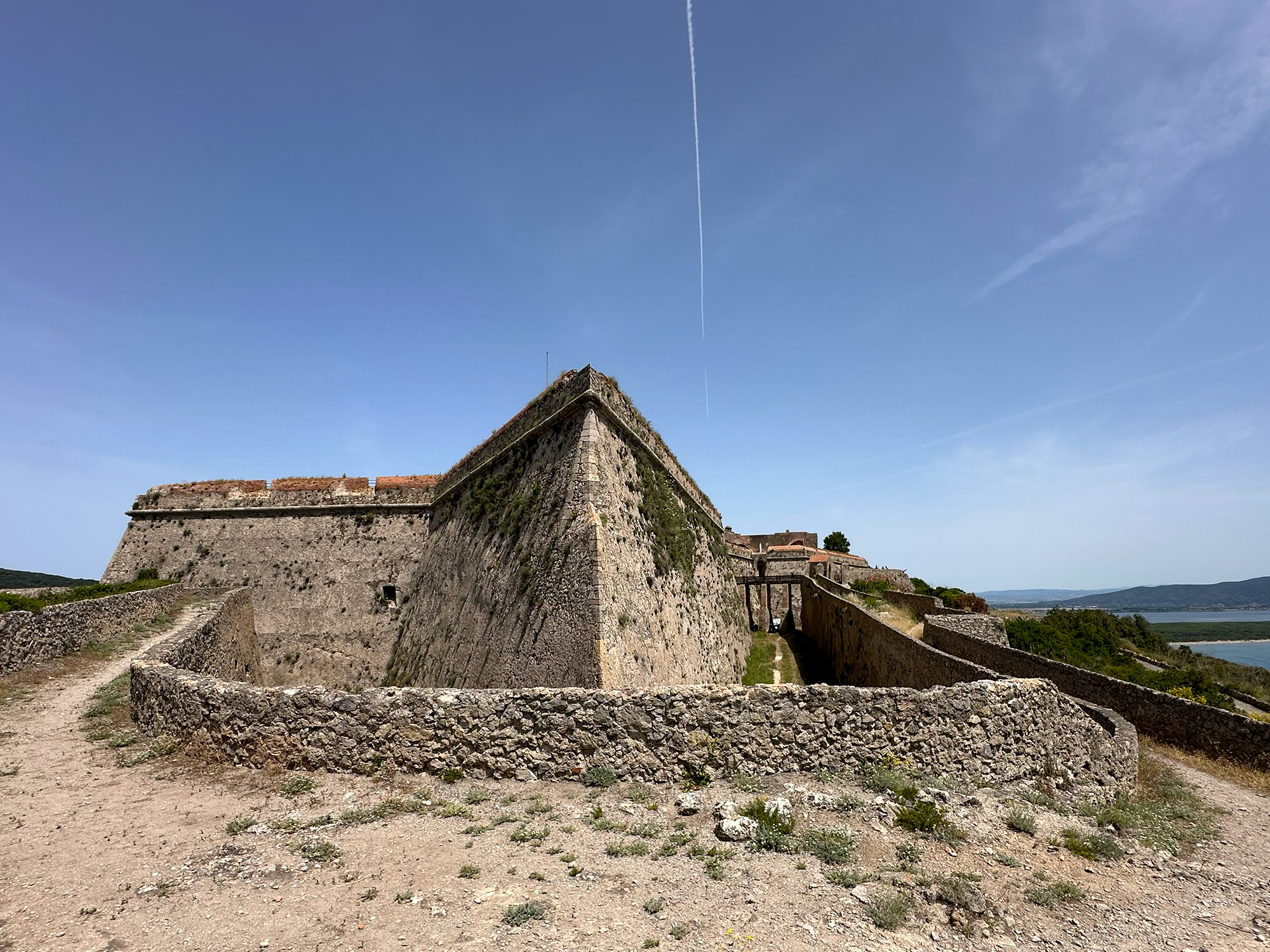
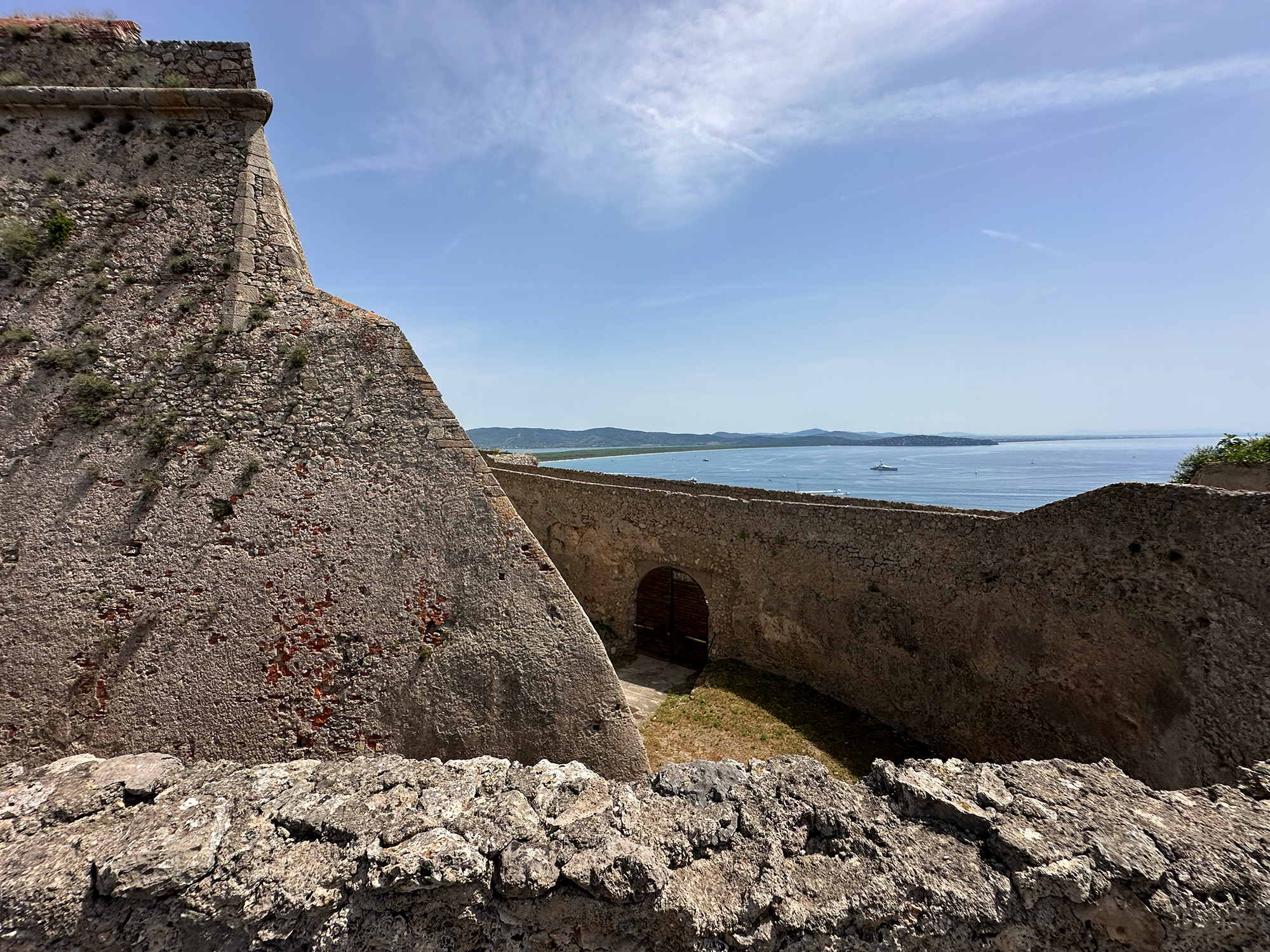
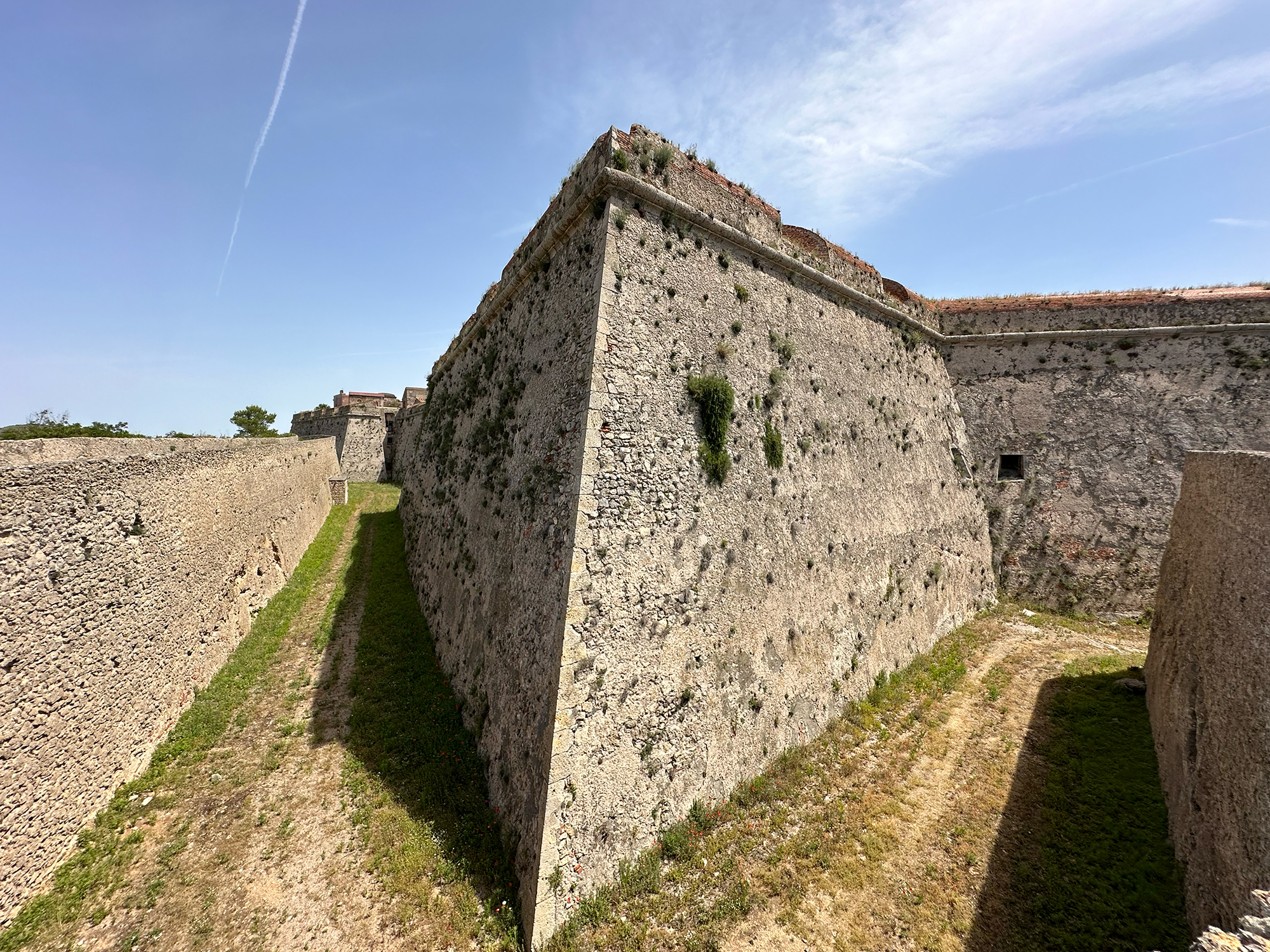
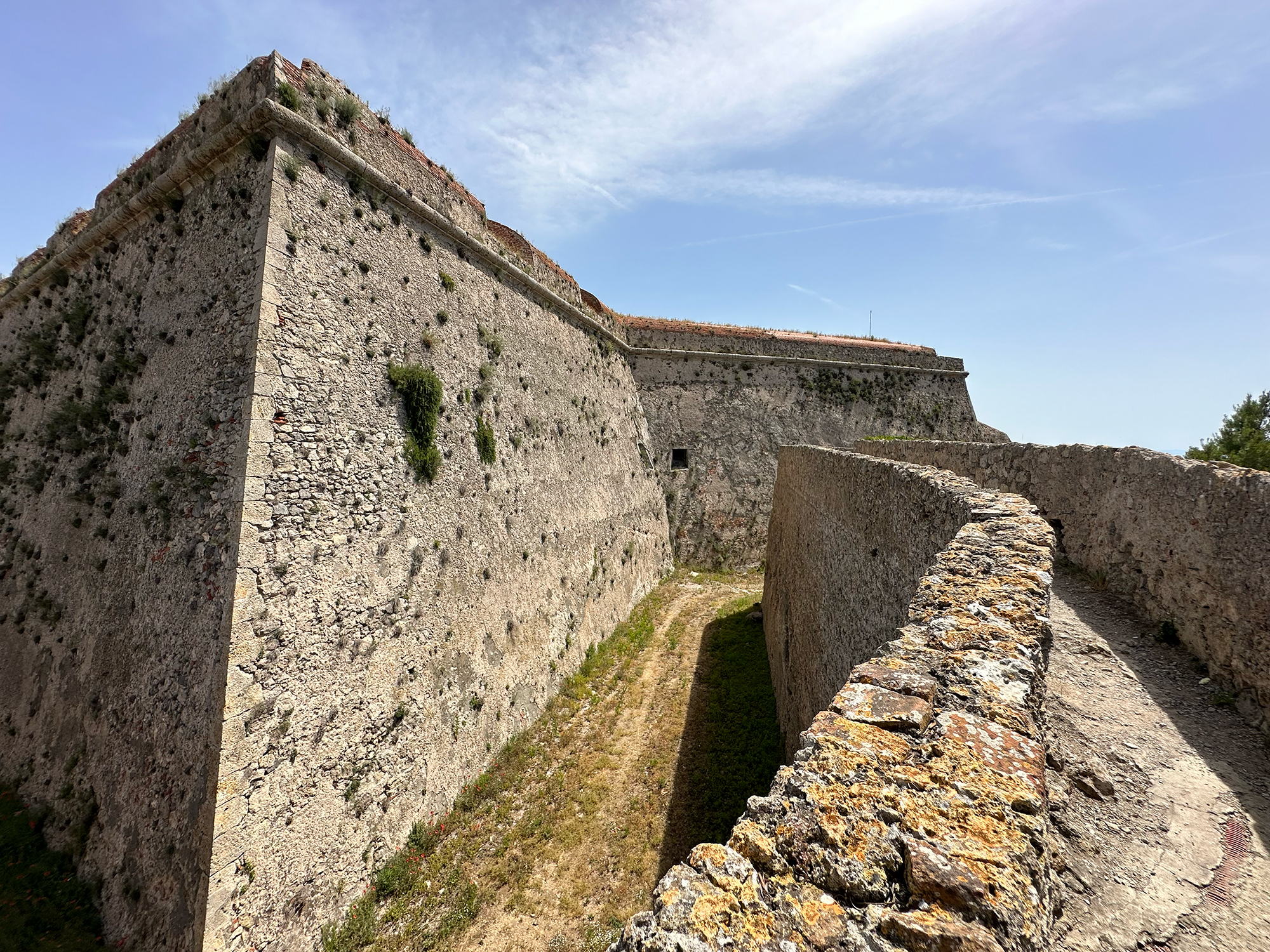
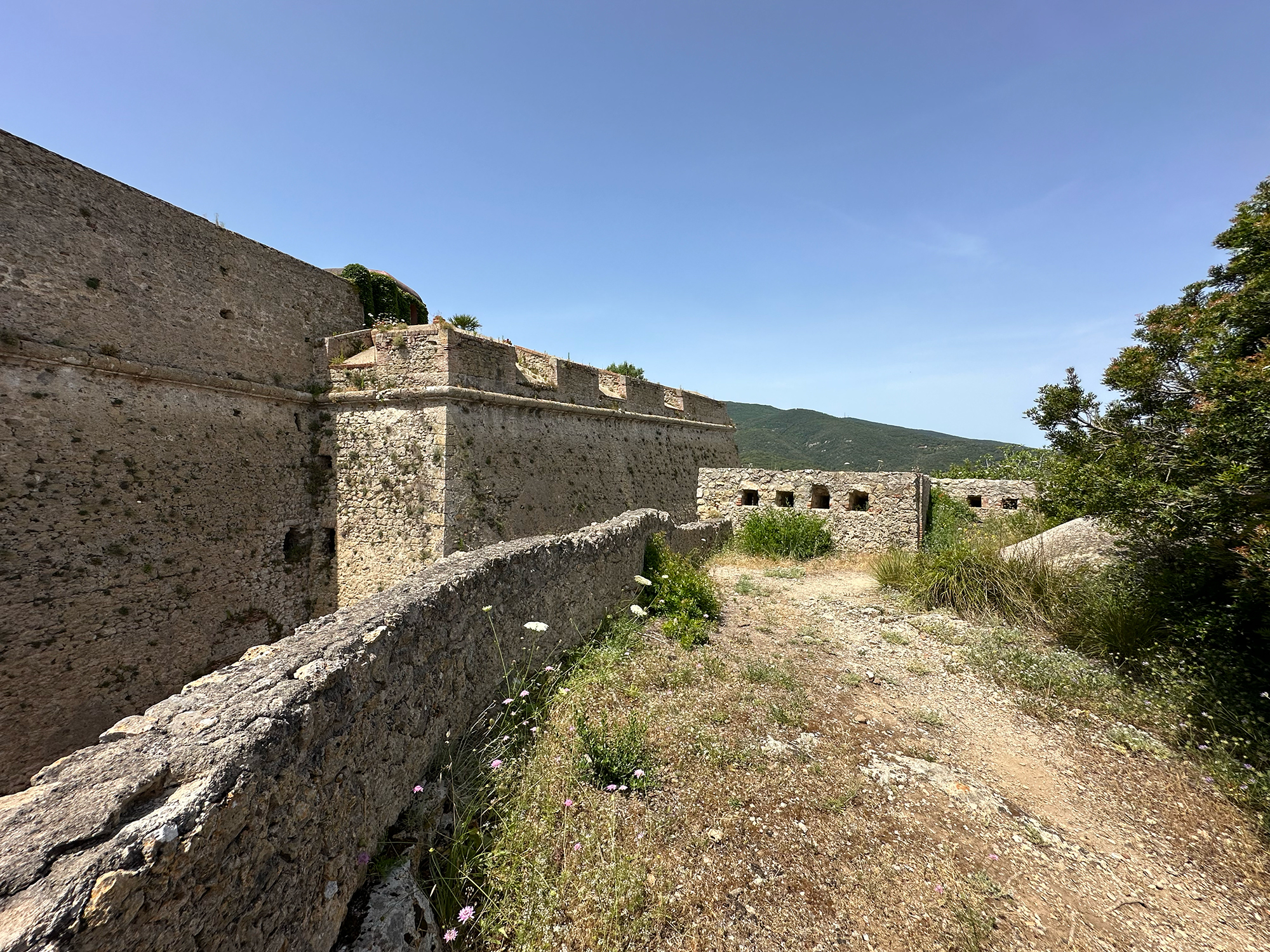
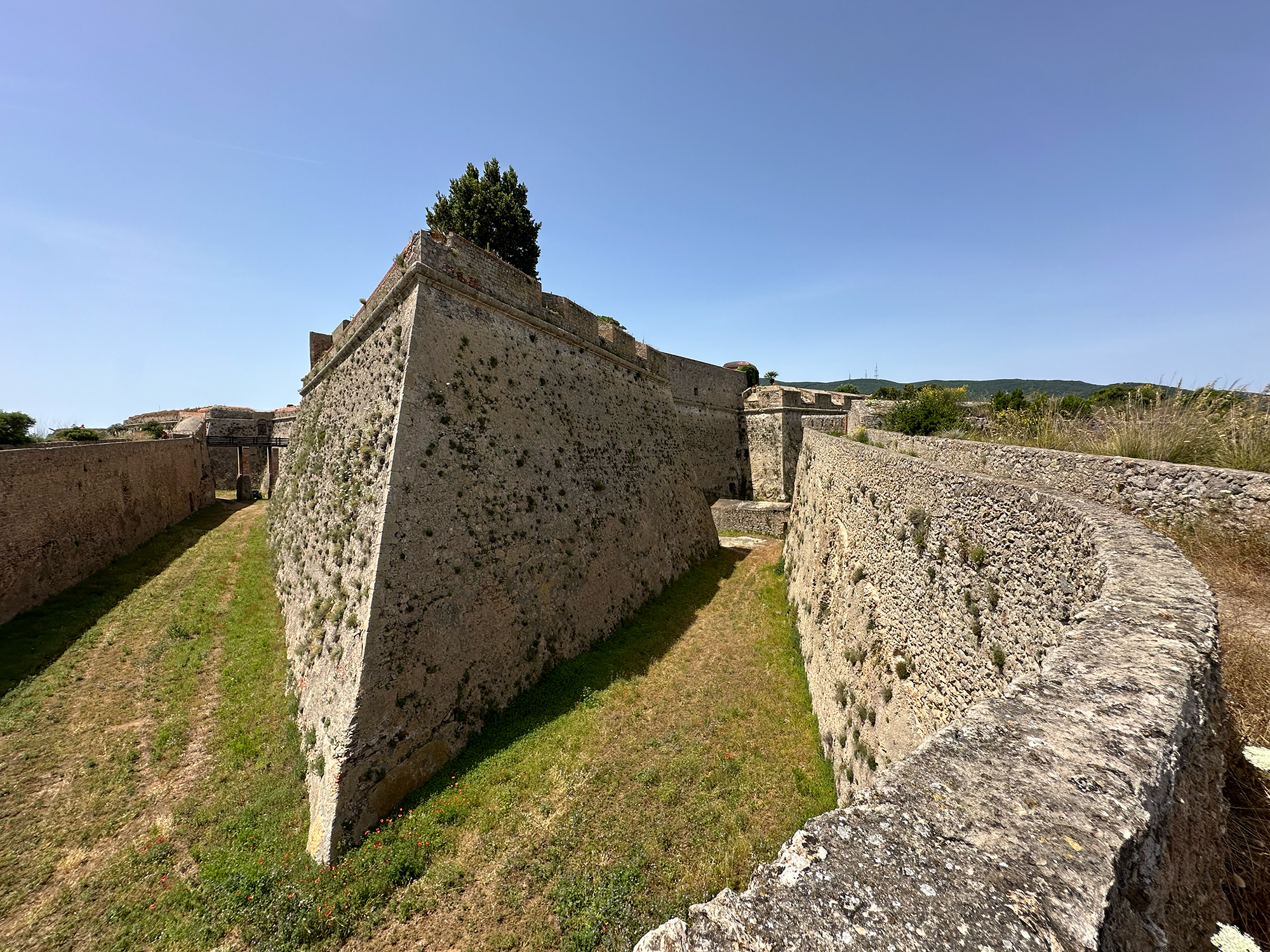
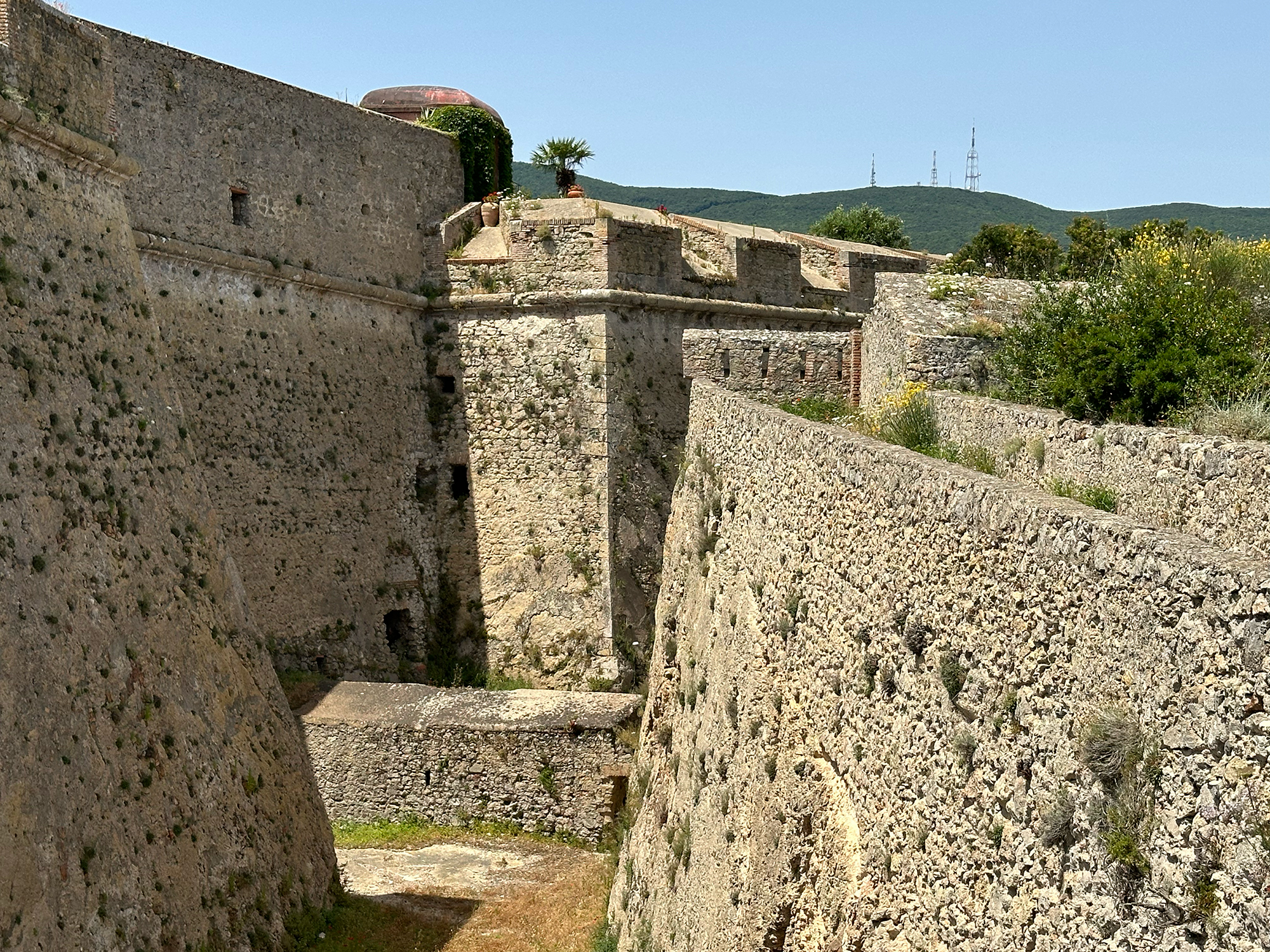
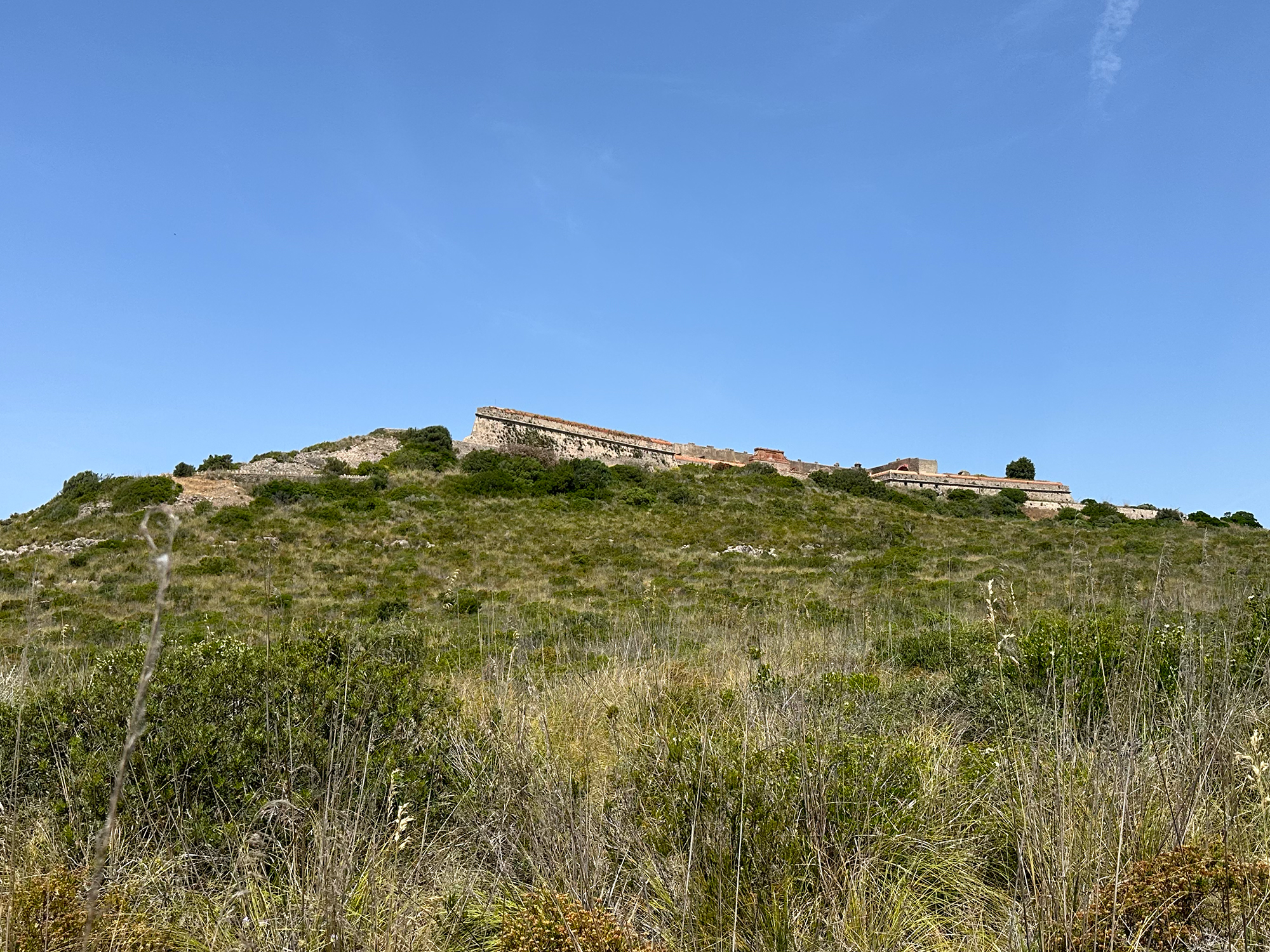
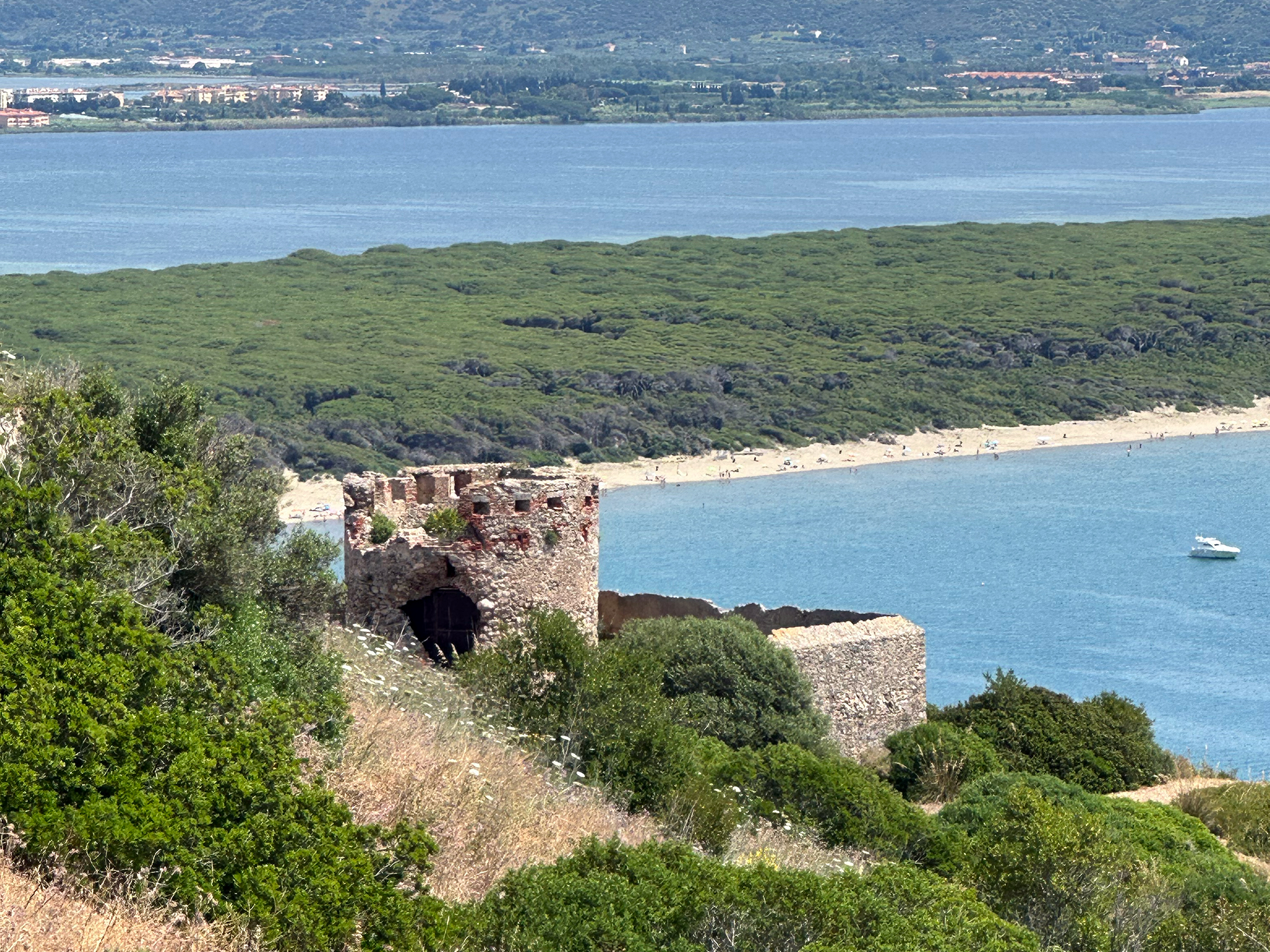
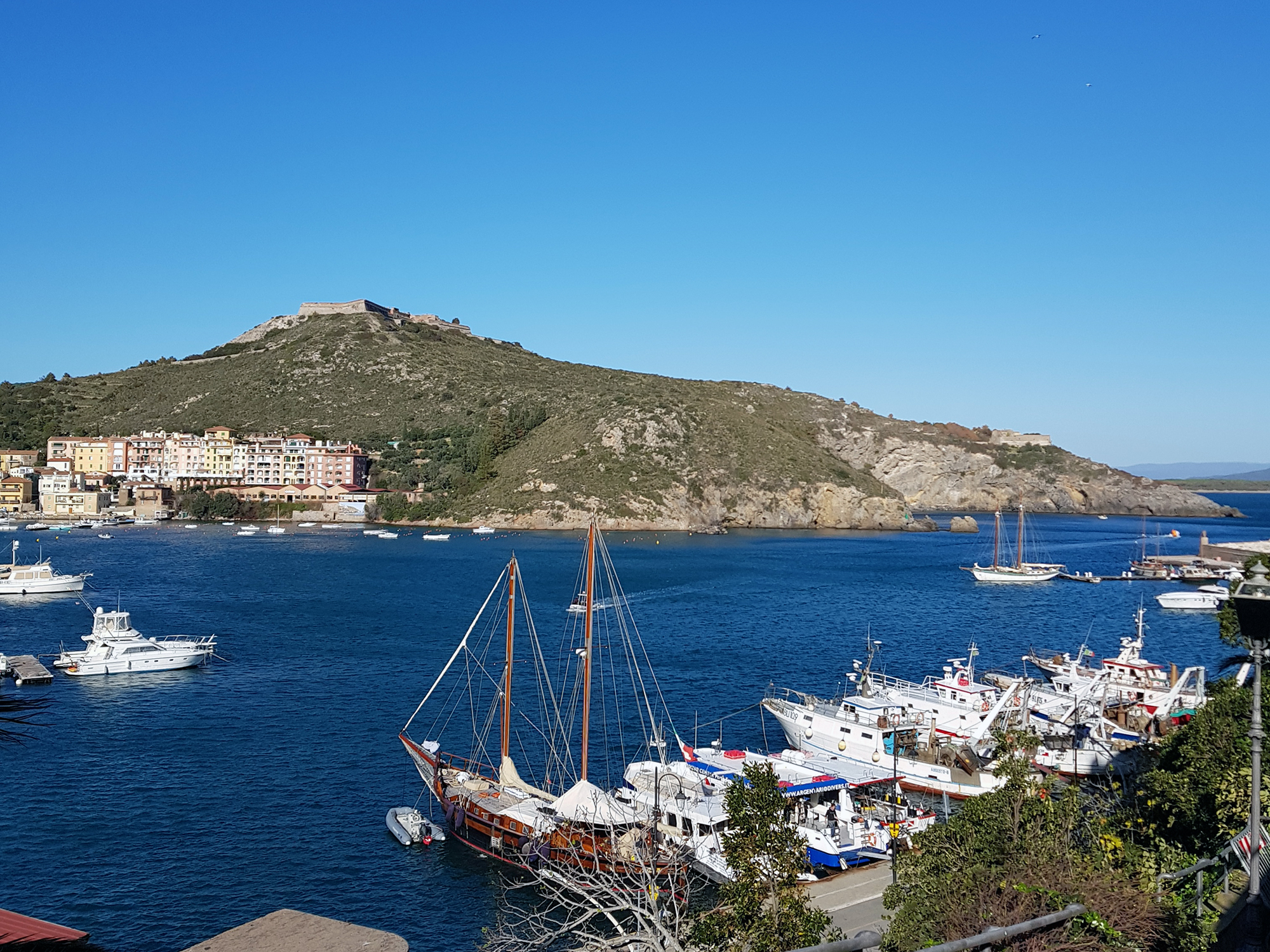

















How to reach
Forte Filippo overlooks Porto Ercole and the entire bay of the old port from the northeast. I recommend reaching it on foot from the town center by taking Via Filippo II and continuing on an uphill dirt path at the end of the street, which will bring you in front of the bastions. With a detour, you can reach Forte Margherita (also privately owned), and with another, right in front of the fort, the ruins of the Torre del Mulinaccio.
It is also possible to drive up via a narrow road (Via di San Rocco) immediately on the left before the start of the descent leading to the town. This road becomes very uneven and private about halfway up (although the gate has been open for years...).
History
Forte Filippo is a coastal fortification located in the municipality of Monte Argentario, on top of the promontory overlooking the district of Porto Ercole and the entire bay of the old port from the northeast.
The current fortification was built in 1558 by the architect Giovanni Camerini, who also participated in the construction of Forte Stella. This project aimed to strengthen the defensive system of the Spanish State of the Presidi on the site of a previous lookout structure and the Forte Sant'Ermo, built by the Sienese in the fifteenth century. The name was chosen in honor of King Philip II of Spain, who directly commissioned Camerini to carry out the work.
The "modern" fortification (designed to address the challenges posed by the development of artillery) thus created had functions of lookout, defense, and offense, with the ability to actively integrate with the nearby tower of Mulinaccio. Thanks to its position on a steep hill, the complex was considered practically impregnable and, in case of enemy attacks, became the headquarters of the high command.
Between the late eighteenth century and the early nineteenth century, further interventions were carried out by the French during the Napoleonic period and by Lorraine after the entire territory passed to the Grand Duchy of Tuscany. After the unification of Italy, the complex was decommissioned from its military functions and transformed into a prison at the end of the nineteenth century. During World War II, it was used as a shelter for the population during the bombings that hit the area.
In the second half of the last century, the fort was sold to private individuals, subsequently restored and returned to its former glory; the buildings within the fortification were transformed into residences.
The fort presents itself as an imposing quadrangular fortified complex, consisting of a double curtain wall with a massive cordoned scarp base, enclosing a wide and deep moat separating the outer fortification from the inner one.
The double walls enclose at each corner a double bastion of triangular shape, both external and internal, along with a smaller single bastion (functioning as a ravelin) to defend the access point on the outer wall. The architectural peculiarity lies in the asymmetry of the corner bastions, which along the outer curtain walls retain niches for attack and active defense weapons. From the northern bastion, a curtain wall, itself defended by a bastion and segmented walls with loopholes along the walkway, protects the path connecting the fortification to the nearby Mulinaccio Tower, while to the east there were connections with the Battery, or Fort, of Santa Caterina, a structure located slightly lower down.
Access to the fortification is from the eastern side, through a round-arched gate at the ravelin, leading to a drawbridge and a second lowered arched gate clad in travertine, above which is placed a large Spanish coat of arms.
From the inner courtyard, one can access the buildings that were once used for military functions. These housed a powder magazine, a first aid station, the guards' quarters, and storage warehouses; among them, the chapel of San Nicola, a single-nave structure from the eighteenth century, still stands out. It is possible to visit only the perimeter of the fort by walking along the outer perimeter walkway, from which there is a stunning view.